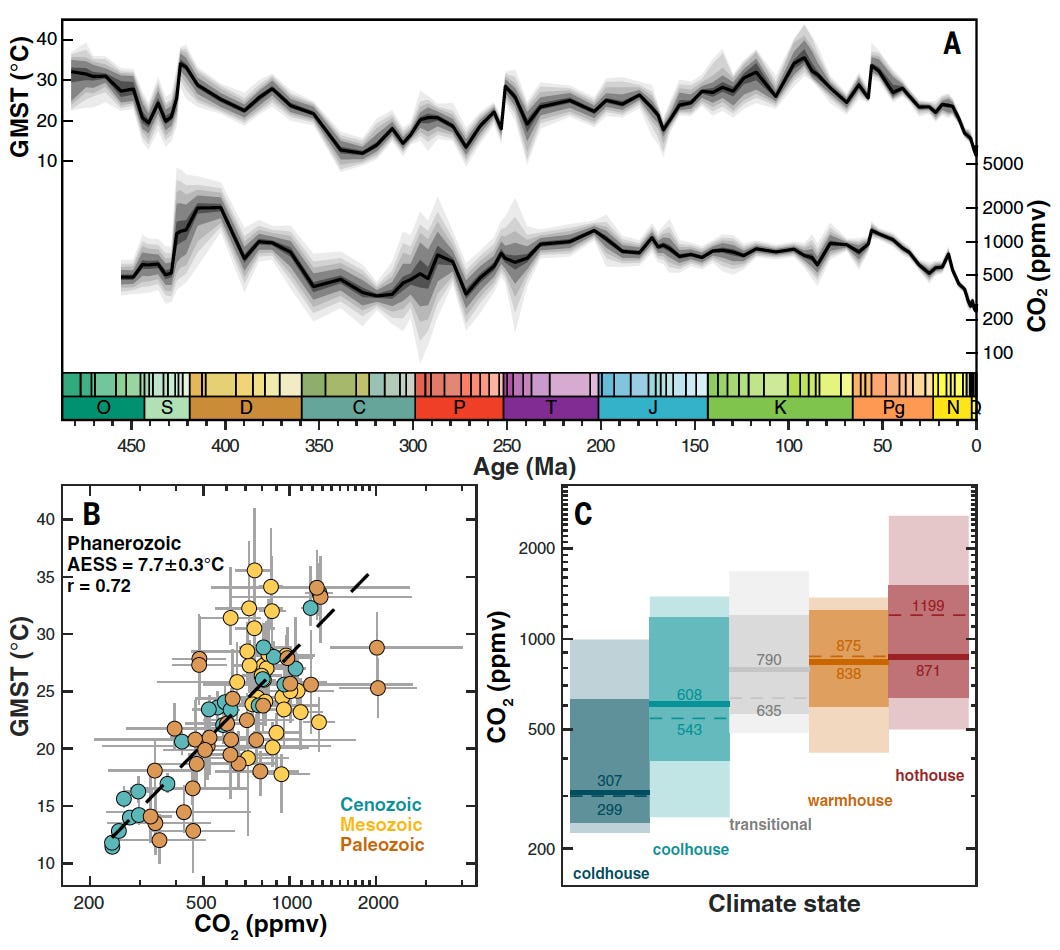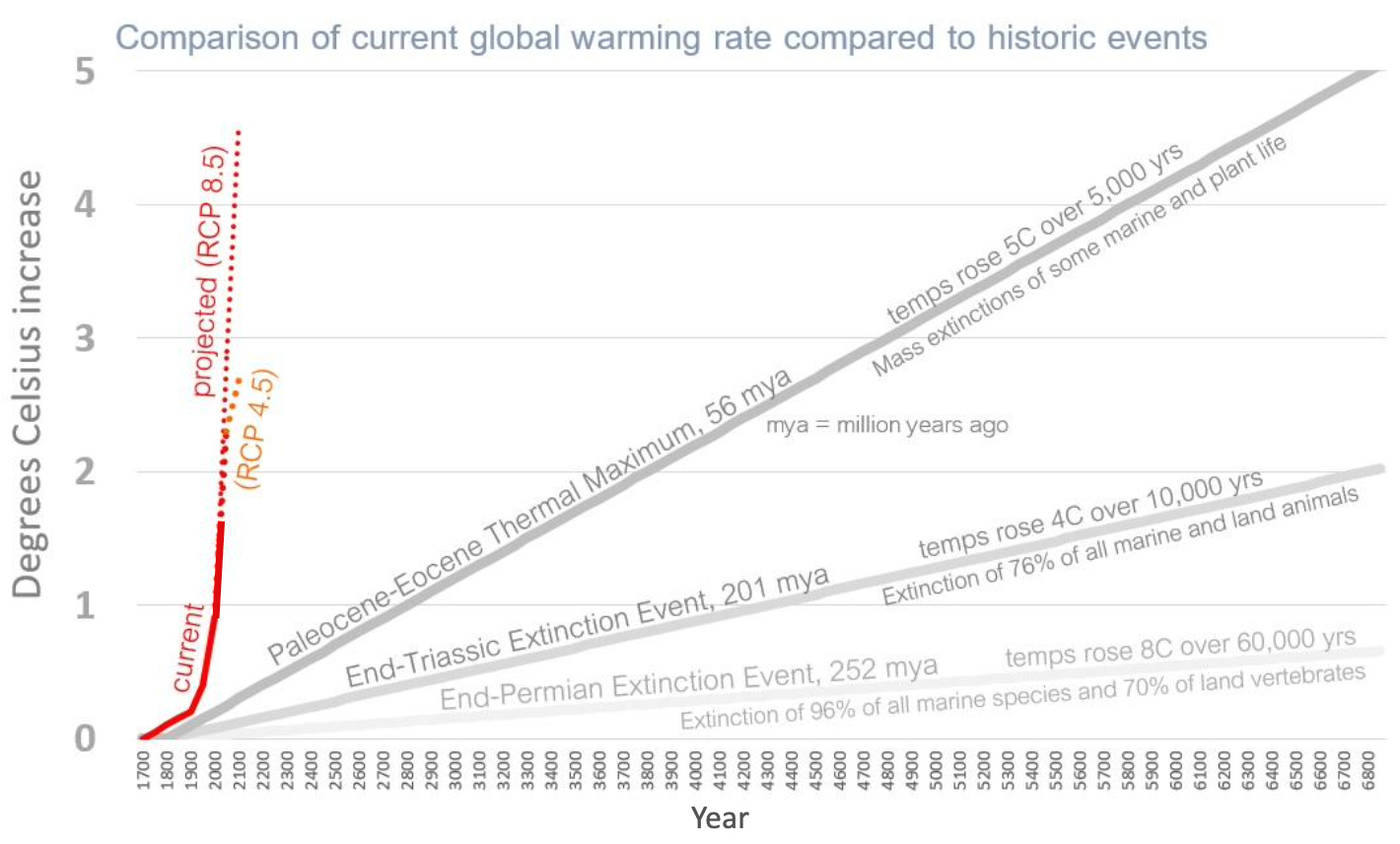Greenhouse Gases vs Albedo - Which is the Strongest Warming Force?
We all (should) know that greenhouse gases are warming the climate, but albedo, the Earth’s reflectiveness, is dropping, allowing in more sunlight. Are they connected and which is worse?
Albedo
A little less than a third of the solar radiation that hits the Earth is reflected back out into space. Every surface on the planet reflects this short wave radiation, but to different extents. White fluffy clouds and large sparking areas of ice reflect 80-90% but deep blue oceans and dark land masses reflect as little as 10%.
This phenomena was demonstrated to me as a schoolboy in the 1970s with a little experiment that is probably banned now (so please don’t try this at home, or if you do, don’t blame me - you have been warned).
Wrap a piece of silver foil around the top of your hand. Hold your hand next to a candle. You should not feel very much warmth at all. Next take a black felt-tipped pen and draw a filled in circle on the foil and try it again. The pain you feel is due to the drop in albedo and your hand absorbing the heat that was previously being reflected away.
As the ice sheets melt, sea ice dwindles, glaciers retreat, clouds change, snow lines move up hill and to higher latitudes, shiny reflective surfaces are replaced with darker absorbing surfaces, so the Earth’s albedo reduces.
The NASA CERES satellite system has been tracking the energy flows to and from the planet since 2000. This first graph shows the reflected short wave radiation from the Earth’s surface. The drop over just 24 years is clear. The resulting energy accumulating from this drop is significant.
Greenhouse gases
Greenhouse gases don’t play a part in the shortwave radiation side of the energy balance. They effect long-wave radiation. Every body of matter emits heat in the form of radiation, (as long as its above absolute zero: -273ºC). The wavelength of the emitted radiation gets shorter the higher the temperature of the body. Thermal cameras or night vision scopes are tuned to detect infrared which our eyes can’t see. Heat up a bar of metal in a fire and it glows in the visible spectrum and so on.
Every surface on the Earth emits in the long-wave infrared. This heat energy passes through the atmosphere and out into space, joining the reflected shortwave radiation. In a balanced stable climate the total solar input matches the total reflected and radiated output.
The greenhouse gases act on this process by trapping some of the long-wave radiation, keeping it in the atmosphere and passing it back to the surface. Every gas has an absorption spectrum, a particular set of wavelengths that it responds to. Astronomers use this knowledge to tell what gases exist in space, within stars and exoplanets by seeing what wavelengths are absorbed. It’s also how a mass-spectrometer works. It just so happens that carbon dioxide, methane, nitrous oxide and other trace gases absorb the infrared wavelengths that the Earth’s surfaces emit. This is a good thing, as without it, the average temperature on Earth would be -30ºC. But you can have too much of a good thing.
In the short term of centuries and millennia, the whole system is self regulating. If more solar radiation makes it to the surface, it warms that surface which emits more long-wave radiation in response. After a little time, the net effect at the top of the atmosphere is zero. The decrease in reflected energy is made up for but the increase in radiated energy. The climate system regains stability. Likewise if less solar radiation makes it to the surface, it cools which emits less long-wave radiation in response. The net effect is still zero and the climate again regains stability.
Longer term changes in Earth’s orbit or continental organisation effect the amount and distribution of the incoming solar radiation. A new balance is found and the climate stabilises over millennia and longer.
De-stabilising events
Any balanced system can be perturbed by giving it a nudge. A small nudge in a well balanced system will result in a brief wobble followed by a return to the balanced state. A big jolt or even a smaller one in a poorly balance state can make a lot of difference.
Temperatures have tracked greenhouse gas concentrations in the atmosphere for hundreds of millions of years1. There have been significant nudges though that we can learn from. Most of these involve massive volcanic eruptions called Large Igneous Provinces where molten lava and gases belch from the earth over extended periods of time, sufficient to change the constitution of the atmosphere. The principle active gas in these eruptions is carbon dioxide. The Palaeocene-Eocene Thermal Maximum is the most recent example when North America split from Europe opening the North Atlantic, spewing thousands of cubic kilometres of lava and copious amounts of CO2 over a period of 5,000 years.
These sudden (in geological time) changes push the climate out of balance requiring a new balance to be found at a higher temperature. A temperature high enough to increase the surface heat to a level where the long-wave radiation overcomes the increased absorption of the atmosphere.
Feedbacks
These increases in temperature have knock-on effects though. Some act to accelerate the warming further. If the warming melts ice sheets for example, then albedo drops, allowing more incoming sunlight causing more warming in a feedback look.
It turns out that clouds are a hugely important feedback mechanism. A warmer atmosphere allows more water vapour to be carried in the lower levels without condensing into clouds or rain. This has a double edge to it, less clouds reflect less shortwave radiation, but also water vapour is a powerful greenhouse gas in itself. Warming increases.
Balance
Human emissions have pumped CO2 into the atmosphere over 100 times faster than any event in the history of the Earth. As a result temperatures are rising ten times faster than they have ever done before. The last 20 years or so have seen the engagement of the albedo feedback as the Earth tries to find a new equilibrium for the altered atmosphere.
A new equilibrium will be achieved at a temperature high enough for the outgoing long-wave radiation to overcome the greenhouse gas concentration and match the decrease in albedo. At that point warming will stop, the feedbacks will disengage and a new stable climate will emerge. It will be a new climate, not the old or even the present climate. Whether that is at 2º, 3º or even 6ºC higher than the stable Holocene depends entirely on how rapidly we stop creating fossil fuel emissions.
The risk we have chosen to take is that often when CO2 levels have increased in the past, the rate of change has been too much for evolution to keep up with. Rapid temperature rises cause mass extinction events, with today’s situation being no exception.
The big difference with the Anthropocene is the pace of the change. No wonder the current species extinction rate is over 1,000x the background level. Nature has never been exposed to this rapid an event before, with the exception of a 10km wide asteroid impact. The consequences are unknown, but unlikely to be good.
Greenhouse gases vs Albedo reduction
If we look at the breakdown of the Earth’s Energy Imbalance (EEI), which I described in another article2, shortwave reflection through albedo is in decline adding to the energy imbalance in both cloudy and clear sky settings. This shows the combined albedo loss contributions of cloud changes, ice loss and land changes.
This should be balanced by increases in outgoing long-wave radiation. Cloudy areas are indeed radiating more as the atmosphere warms, but over the last quarter century, clear sky long-wave radiation escaping the atmosphere has actually dropped, adding to the warming. This implies that the greenhouse gas accumulation is rising faster than the surface temperature can keep up with.
So what is causing the warming, long-wave or shortwave? The answer is both, but more precisely, albedo loss is a self-reinforcing feedback, adding to the primary initiator and still equal contributor to the warming - greenhouse gases.
Looking at the EEI ladder diagram again, the contributions of the albedo and greenhouse gases act together to raise the energy imbalance, accumulation and therefore global warming. Both are critically important, but stopping the accumulation of greenhouse gases is the one we have any control over.
https://doi.org/10.1126/science.adk3705
A breakdown of the trends within the Earth Energy Imbalance (EEI)
In 2021 a paper called ‘Radiative Energy Flux Variation from 2001–2020’ was published by Dübal and Vahrenholt using NASA’s CERES data to examine the various energy flows that are causing the planet to warm. Adopting their approach to include data to 2024 shows the continuation and acceleration of most warming factors.











I used to take my students into the college car park, told them to put their hands on white cars and black cars to feel the temperature (and albedo ) difference. That way I didn't get sued for personal injury claims! 😬
Years ago I would also teach students that the ideal home would have a white roof and black walls, so the high summer sun would be reflected, and the low winter sun would be absorbed in the vertical walls to warm the house for free. Obviously that didn't catch on!
Even a policy of painting all roofs and roads white in cities would massively reduce the 'heat island' effect of cities, and reduce aircon usage and save energy bills too.
But hey, why sell them a tim of paint when you can sell them aircon and climate control for 1,000 times the price?
There are often simple, cheap and elegant solutions (in design terms). But hey, how can you make a profit from it?
Burning fossil fuels are the connection of course; that is what makes both the increased aerosols that deliver fast cooling as well as the GHG's that make slow warming.
Worth noting that the cooling effect comes first, and the effect of any FF pollution "pulse" is almost immediate and lasts only a few days to weeks, so for a time after increasing the rate of fossil fuel burning it makes some global cooling, then we get the appearance of 'recovery' as the slow and steady GHG tortoise catches up, reaches apparent equilibrium and then goes on to exceed it. It is never a "counter" to global warming - more like the warming counters the cooling effect... and it persists in a way that aerosols do not.
For the very unhelpful way that 'temporary' cooling has helped to confuse and mislead about the nature of the climate problem(s) fossil fuels cause and induce underestimation of the full extent of enduring warming influence fossil fuel aerosols deserve special condemnation.
For not stopping quickly when the fossil fuel burning stops - for their persistence - the GHG's are probably worse.
We can't counter the warming effect by burning more fossil fuels; delaying the reduction of fossil fuel burning because we are depending on the cooling of aerosols to make global warming look weaker than it actually is - to delay experiencing the full warming effect - will only make the warming worse.